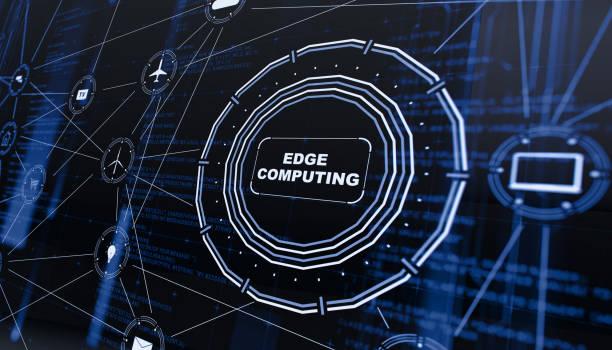Introduction
In today’s digital world, speed matters more than ever. From self-driving cars to real-time analytics in healthcare and finance, the demand for fast, reliable data processing continues to grow. This is where edge computing comes in.
Often described as the next big step after cloud computing, edge computing allows data to be processed closer to its source, reducing latency and improving performance. But what exactly is it, and why is it being called the future of fast data? Let’s break it down.
What Is Edge Computing?
Traditionally, most of our data is sent to centralized servers or the cloud for processing. While cloud computing has revolutionized how businesses store and analyze information, it has limitations—mainly latency and bandwidth demands.
Edge computing solves this problem by moving data processing closer to the devices generating it. Instead of sending all information to a distant cloud server, data is analyzed at the “edge” of the network—whether that’s a smartphone, IoT sensor, or local data center.
Example: A self-driving car cannot afford delays in receiving data from the cloud. Edge computing enables it to process information locally, ensuring faster decision-making.
How Edge Computing Works
- Data Generation – Devices such as IoT sensors, wearables, or industrial machines collect data.
- Local Processing – Instead of sending everything to the cloud, critical data is processed on-site or nearby.
- Cloud Integration – Non-urgent or bulk data can still be sent to the cloud for long-term storage and deeper analysis.
This hybrid approach provides the speed of edge computing with the scalability of the cloud.
Key Benefits of Edge Computing
1. Ultra-Low Latency
Edge computing drastically reduces the time it takes for data to travel back and forth, making it ideal for:
- Autonomous vehicles
- Augmented reality (AR) and virtual reality (VR)
- Online gaming
- Industrial automation
2. Reduced Bandwidth Usage
Not all data needs to travel to the cloud. By filtering and analyzing information locally, organizations cut down on bandwidth costs and prevent network congestion.
3. Improved Reliability
Since devices can operate independently of the cloud, edge computing ensures critical operations continue even if the internet connection drops.
4. Enhanced Security
Processing data closer to its source can limit the risk of large-scale data breaches, as sensitive information doesn’t always need to be transmitted to central servers.
Why Edge Computing Is the Future of Fast Data
1. Growth of IoT Devices
By 2025, billions of IoT devices will be generating massive amounts of data. Edge computing ensures these devices function smoothly without overwhelming the cloud.
2. 5G Expansion
The rollout of 5G networks complements edge computing by enabling lightning-fast connectivity. Together, they create the foundation for smart cities, remote healthcare, and advanced automation.
3. Real-Time Applications
From smart manufacturing to live video analytics, industries increasingly need real-time decision-making capabilities. Edge computing delivers this speed.
4. Cost-Efficient Scaling
As organizations process more data, cloud costs can rise sharply. Edge computing reduces these expenses by handling immediate data locally.
Use Cases of Edge Computing in 2025
- Healthcare: Remote monitoring devices process patient data instantly, enabling quicker responses.
- Retail: Smart checkout systems and personalized in-store experiences rely on edge data analysis.
- Transportation: Autonomous vehicles and traffic management systems depend on split-second decision-making.
- Manufacturing: Predictive maintenance powered by IoT sensors prevents downtime and boosts efficiency.
- Entertainment: Cloud gaming and immersive VR experiences run smoother with lower latency.
Challenges of Edge Computing
While edge computing has huge potential, it also faces hurdles:
- Infrastructure Costs: Businesses need to invest in edge-enabled devices and local servers.
- Security Risks: More endpoints can mean more vulnerabilities if not properly secured.
- Management Complexity: Coordinating data between the edge and the cloud requires advanced systems.
- Standardization Issues: The technology is still evolving, and universal standards are being developed.
Despite these challenges, the rapid adoption of edge computing shows its importance in shaping the future.
Conclusion
As the world becomes increasingly data-driven, edge computing is emerging as the backbone of real-time applications. By reducing latency, lowering costs, and improving reliability, it’s not just an upgrade to cloud computing—it’s a game-changer for industries across the globe.
From powering smart cities to enabling immersive digital experiences, edge computing is the reason why the future of fast data looks so promising. Businesses that embrace it early will gain a significant competitive edge in the digital era.

